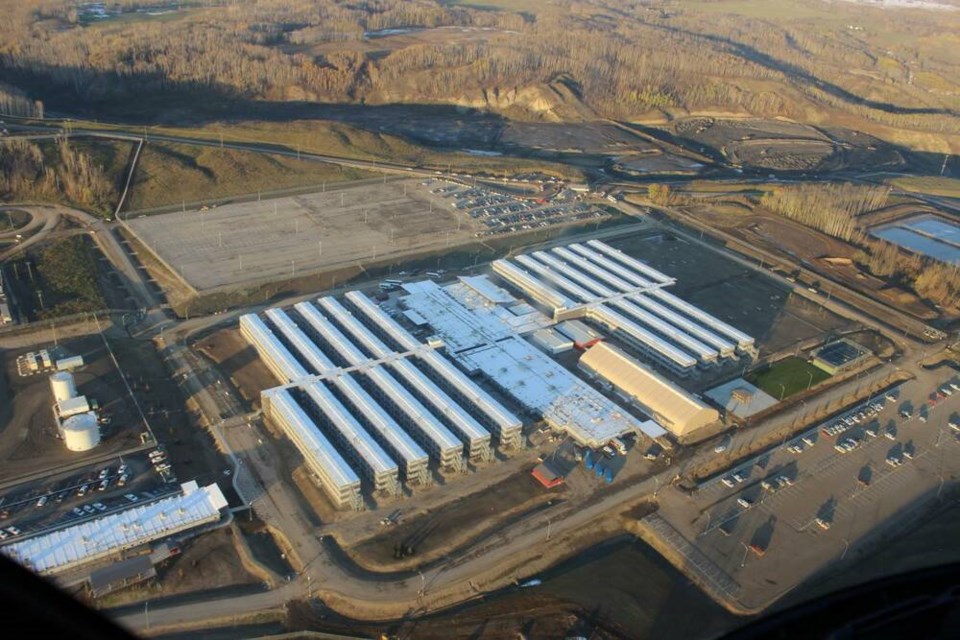The B.C. government for years has been preoccupied with the need for more housing and faster, cheaper construction of schools and health facilities.
You’d think the instant town created to house workers at the Site C dam project in northern B.C. could fill some of those needs, now that the project is nearing completion. But it may end up being junked because no one can figure out how to make further use of it.
Hundreds of millions of dollars of facilities were installed to house thousands of workers at the massive project. The buildings are now 10 years old, and most of them could be headed for the dump.
The issue, first reported by the Fort St. John news site energeticcity.ca, arose in the legislature this week when Conservative MLAs asked what the plan is. Energy Minister Adrian Dix said no one has expressed any interest in repurposing the facilities.
“As interested parties assess needs against the camp building and scale, all parties have determined that camp assets are not suitable for them.
“It’s a huge facility, very difficult to move.”
Dix said B.C. Hydro is open to offers and is trying to drum up interest in the assets, but so far there is none.
If something doesn’t materialize, the huge camp will be decommissioned and dismantled. An effort to salvage and recycle materials will be made, and the rest “would have to be landfilled.”
When work on the dam was getting underway, B.C. Hydro awarded a $470-million contract to ATCO Two Rivers Lodging Group to construct and operate the camp over what turned out to be the 10-year construction period.
Officials said the company was also responsible for decommissioning the camp, but B.C. Hydro seems to be in charge of that process now.
The utility hired a consultant in 2023 to canvass the market for selling the facilities.
There was a lot of engagement, with 20 public and private sector parties showing interest. But “all parties to date determined that the camp’s assets were not suitable,” Dix said.
“Lots of efforts have been made to offer this to everybody. Those efforts have not been successful, although they’re not finished.” Dix said the challenge is that it is so big and different from smaller temporary work camps that are more portable.
When he was health minister, he considered using some of the building to house health workers in Fort St. John. “Everyone agrees it would be desirable but you still have to have someone prepared to take it. Because of its location and size, that is a very difficult proposition. But we haven’t given up.”
The $16-billion Site C project is in Independent MLA Jordan Kealy’s riding (Peace River North) and he worked on it for a time as a millwright.
He said a few years ago there was some interest in reusing the facilities. “It could be amazing housing, that could be used somewhere else. We’re always looking for housing. It’s got a giant movie theatre, commercial kitchens. There’s no way that taxpayers should ever have to see an investment like this go into a dump.
“And right now we only have so much capacity left in the landfill.”
Municipal Affairs and Housing Minister Ravi Kahlon told the legislature separately that his ministry is having “initial conversations” with B.C. Hydro about the facilities, but referred further questions to Dix.
Conservative MLA Linda Hepner (Surrey-Serpentine River) said all opportunities to use the units should be exhausted before they are taken to the landfill.
The first of about 1,700 beds opened in February 2016. The camp consists of 21 three-storey dorms with single occupancy bedrooms and baths, 131 common and dining units, 24 modular offices, a fitness building, gym and theatre.
Energeticcity.ca reported that Peace River Regional District directors are frustrated at having to deal with a massive load of waste that could take years off the lifespan of the landfill.
The power project has been coming on stream successfully this year, but the likely fate of the camp is an untidy ending.
It stems from the fact it was built as a permanent site from the start, with little or no thought to repurposing.
B.C. Hydro said in 2015 at the outset of construction that reusing the facilities after completion was unlikely because it would be too expensive.
There are provincial regulations about “maximizing the reuse and recycling of building materials,” but they don’t apply to entire structures.
Anyone with a better idea — and access to a lot of flatbed trucks — should contact the B.C. government.



